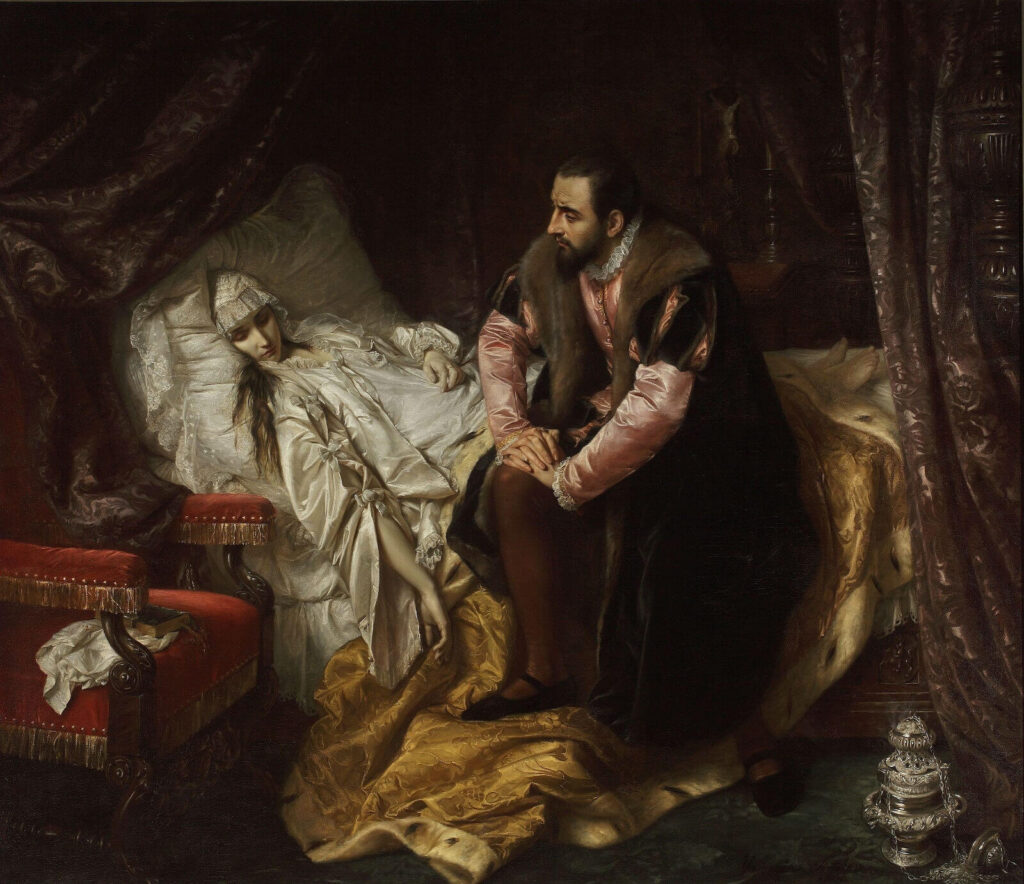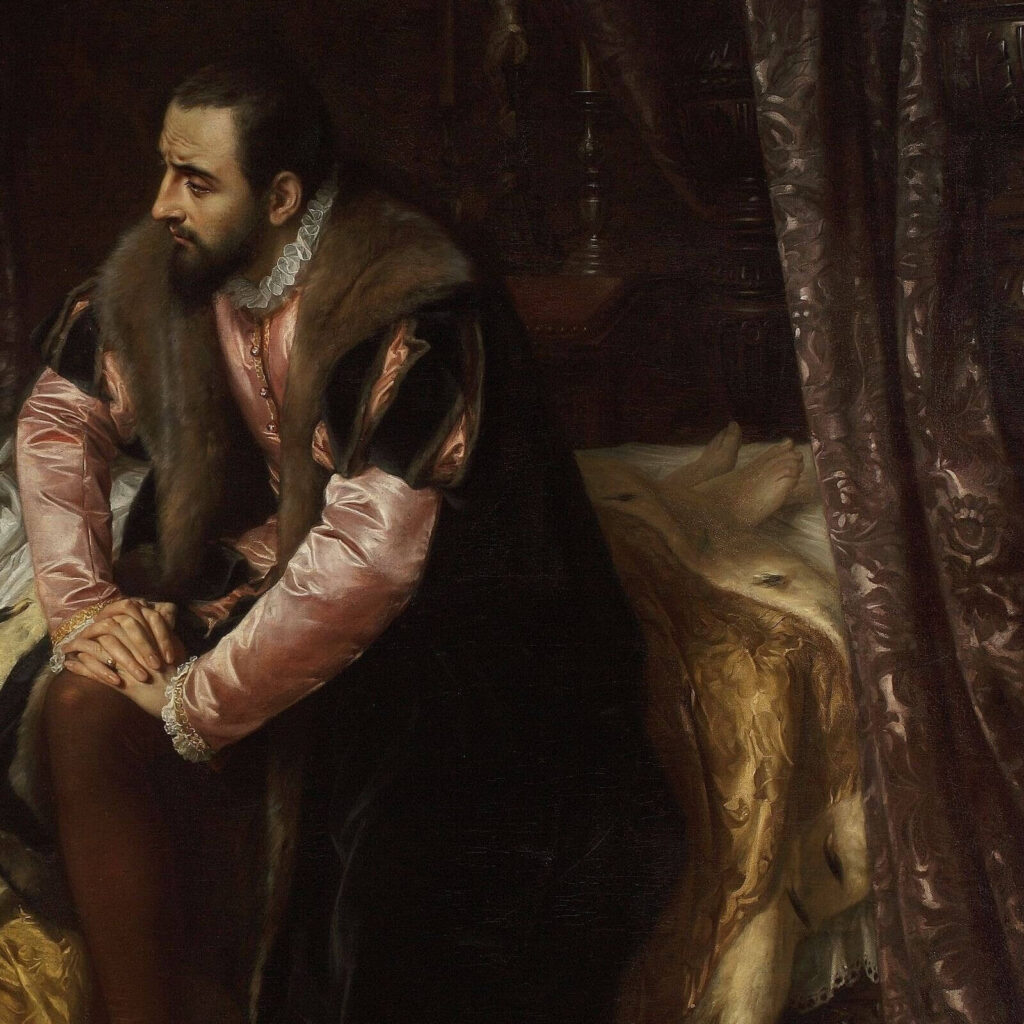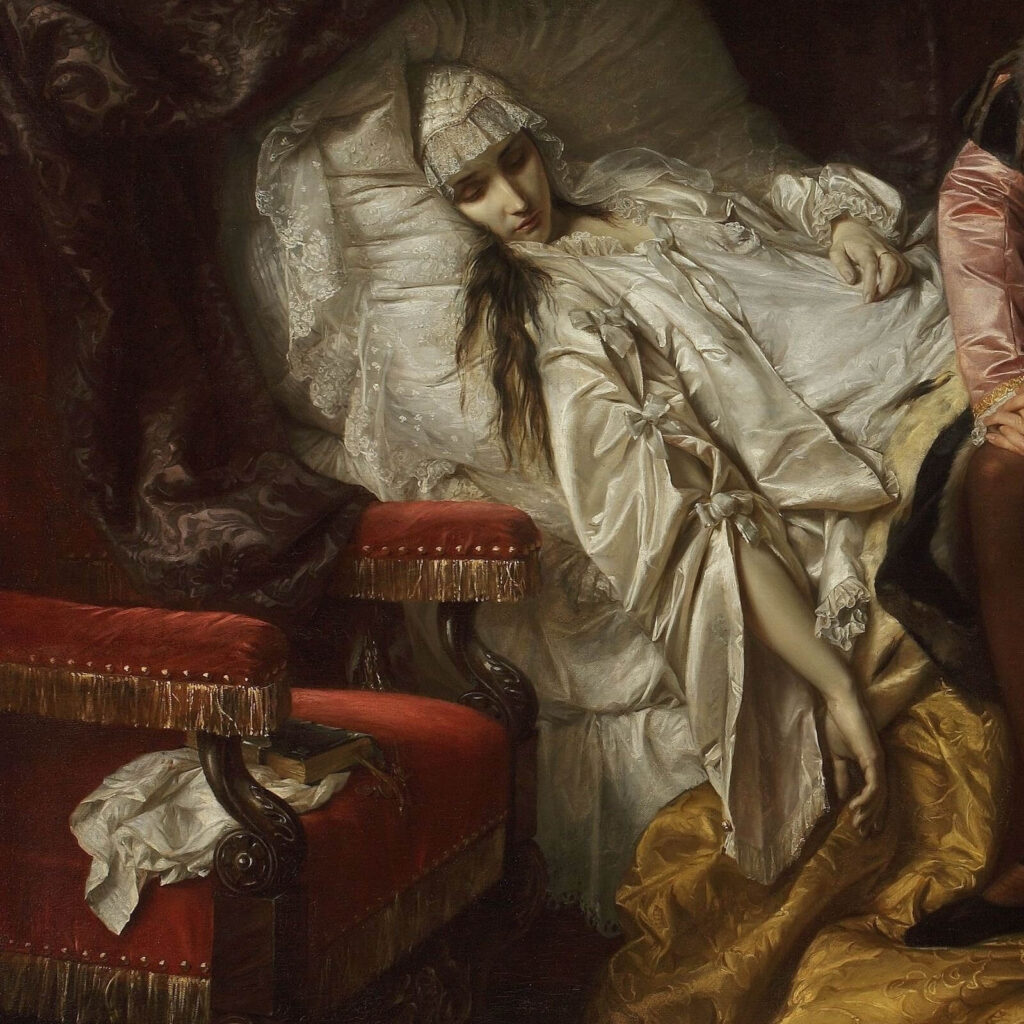Masterpiece Story: Portrait of Madeleine by Marie-Guillemine Benoist
What is the message behind Marie-Guillemine Benoist’s Portrait of Madeleine? The history and tradition behind this 1800 painting might explain...
Jimena Escoto 16 February 2025
17 June 2024 min Read
The National Museum in Warsaw is one of the largest museums in Poland and boasts an extensive art collection. Among its body of works is The Death of Barbara Radziwiłł by Józef Simmler. This painting is considered to be Simmler’s most important artwork. It evokes the beauty of the Polish Golden Age with an intensity of compassion and tenderness. Józef Simmler captures both history and humanity. It is a love story of epic proportions.

Józef Simmler painted The Death of Barbara Radziwiłł in 1860. It depicts the death of the infamous Queen Barbara of Poland. Barbara Radziwiłł was a Lithuanian noble whose great beauty caught the eye of King Sigismund II Augustus in 1543. She consented to become his mistress and enjoyed four years of luxurious bliss. However, the bliss soon ended. Lady Barbara married the king in 1547 and it caused a great scandal! It was not the correct protocol for a king of Poland to marry his mistress, especially when the woman was from the lowest rank of nobility.
Barbara Radziwiłł was not the virginal and high-ranking bride that Polish society expected for its king. The marriage was viewed as a misalliance and dishonor to Poland. King Sigismund II Augustus disregarded public opinion and fought his mother and parliament to have his wife officially recognized. Finally, in 1550 he won and Barbara Radziwiłł was crowned Queen of Poland. The victory was short-lived, however, as only five months later Queen Barbara died in 1551. Józef Simmler captures the final moments of this great love story in The Death of Barbara Radziwiłł.

The Death of Barbara Radziwiłł is a historical painting which was a very popular art genre during the 19th century. Historical paintings attempt to recreate epic moments in history such as great disasters, famous deaths, and celebrated victories.
However, Józef Simmler’s The Death of Barbara Radziwiłł is more than just a historical painting. It is a painting that explores the deep human emotions of love and loss. King Sigismund II Augustus gazes lovingly and sadly towards the face of his dying wife. His eyes are wet from tears, and his forehead is marked with furrows.
In contrast, Queen Barbara is still and lifeless. Her body is slumped, her head lays slack, and her right arm hangs off the edge of the bed. Queen Barbara’s white robes complement her pale skin into a vision of deathly pallor. The end of her life is further symbolized through the closed Bible on the chair and the smoking censer on the floor. The Queen is dead, and the gold and ermine bedspread is the only hint of Queen Barbara’s regality.

Józef Simmler’s painting captures the demise of Queen Barbara and the silent witness of King Sigismund II Augustus through its muted colors and sharp details. The shadows and lines of the different fabrics and laces are exquisite. The somb purples, deep reds, and dull violets add to the melancholy scene. The bright whites, silver greys, and rich yellows contrast and add interest. Józef Simmler’s The Death of Barbara Radziwiłł captures a tragic moment from the Polish Golden Age. It is a work of great virtuosity and emotion. It is marvelous.
Barbara Radziwiłł, Google Arts & Culture. Retrieved July 17, 2020.
The Death of Barbara Radziwiłł, Google Arts & Culture. Retrieved July 17, 2020.
DailyArt Magazine needs your support. Every contribution, however big or small, is very valuable for our future. Thanks to it, we will be able to sustain and grow the Magazine. Thank you for your help!